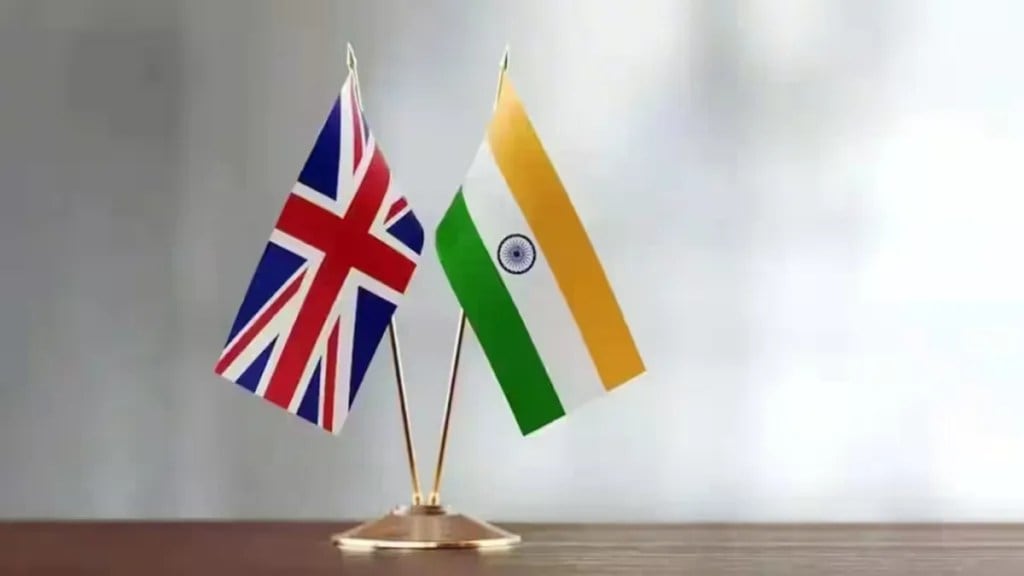By Rakesh Mohan Joshi, Vice Chancellor, Indian Institute of Foreign Trade, Delhi rakeshmohanjoshi@iift.edu
India signed a historic trade deal on Thursday amid worldwide economic chaos and uncertainty triggered by US President Donald Trump’s tariff wars. With the signing of the India-UK deal, India demonstrated its outstanding capability to negotiate complex issues with conflicting interests and arrive at a mutually beneficial agreement aimed at doubling bilateral trade from $55 billion to $120 billion by 2030. The team of Indian negotiators, commerce and industry minister Piyush Goyal, and Prime Ministers Narendra Modi and Keir Starmer deserve credit for navigating through a tough terrain of negotiations.
Trade negotiations between the two nations officially commenced in January 2022 but missed several deadlines mainly due of political turmoil in the UK and a difficulty to find consensus on a variety of contentious issues with conflicting interests. These included movement of people and visa regulations, services trade, patent laws, climate change, data localisation, and non-tariff trade barriers.
However, Trump’s “Liberation Day” reciprocal tariff announcement created global uncertainty by challenging established doctrines and the multilateral trading system under the World Trade Organization, disrupting trade patterns and supply chains. It compelled countries to swiftly find alternative trade partners and reinvent value chains to protect trade and economic growth in an unpredictable economic environment. This has also been a critical factor for negotiators on both sides to conclude the deal on May 6.
Formally known as the India-UK Comprehensive Economic and Trade Agreement (CETA), it is likely to be the most comprehensive trade deal ever signed by India, covering a variety of issues like goods and services trade, digital trade, investments, bilateral government procurements, strengthening intellectual property rights (IPR) protections, government-to-government dispute settlement mechanism, and non-trade issues such as anti-corruption, labour rights, environment standards, etc.
Under the CETA, 99% of Indian goods would enter the UK market on zero duty. It opens enormous opportunities for India’s labour-intensive exports such as textiles, clothing, leather, footwear, marine products, gems and jewellery, toys, mechanical and electrical machinery, automobile, leather and footwear, and minerals. It would increase export of textiles and apparels, besides others, by increasing price competitiveness in the UK market as competing countries such as Pakistan, Bangladesh, and Sri Lanka enjoy free access to the British market under the UK’s Generalised Scheme of Preference (GSP). Such tariff concessions were previously not available to India.
On the other hand, India would remove tariffs on 90% of tariff lines on goods imported from the UK that would cover 92% of existing tariff lines. Reduction of import duties on automobile from 100% to 10% under tariff-rate quotas in a phased manner would facilitate increased availability of British cars in India, while shielding domestic manufacturers. Interestingly, Indian negotiators succeeded in keeping dairy products, apples, cheese, sugar, pork, chicken, and eggs out the deal.
The deal would significantly increase availability and reduce prices of imported Scotch whisky and gin in India as import tariffs would be reduced from 150% to 75% immediately and then to 40% in a phased manner over 10 years. India is the largest consumer of whisky, accounting for half of the world’s consumption. Whisky accounts for over 60% of total sales of Indian-made foreign liquor (IMFL). The share of imported Scotch whisky is around 2% of IMFL sold in India.
The deal would also promote trade in services by facilitating professional mobility, mutual recognition of qualifications, and improved access to India’s professional services market. A critical win is the Double Contribution Convention Agreement (DCCA) that exempts Indian professionals and their employees from paying social security contributions in the UK for short-term assignments of up to three years. Under the agreement, temporary Indian workers are allowed to pay their social security contribution in India for the first year and exempted from any social security payment for the next two years. It is expected to greatly benefit firms expanding to the UK as well as Indian professionals who would otherwise qualify for receiving benefits against social security contributions only after a 10-year threshold.
The DCCA is likely to make UK operations of Indian firms more cost-effective and competitive due to the exemption from incurring additional social security costs. This would greatly facilitate talent mobility benefitting information technology (IT), healthcare, education, and financial sectors. It would translate to 20% savings in salary for over 75,000 Indian IT professionals working in the UK.
The CETA is also likely to increase investor confidence by way of regulatory stability leading to increased foreign direct investment in critical sectors such as advanced manufacturing, infrastructure, and renewable energy. It also covers separate chapters on IPR and digital trade to facilitate regulatory convergence and technical cooperation in areas such as digital payments, cross-border data flows, and cloud services.
The CETA is expected to have a robust dispute settlement between the governments for speedy resolution of trade grievances. Moreover, non-trade issues form an integral part of the agreement.
The CETA between two vibrant democracies and large economies reflects a shared ambition to transform the bilateral trade relationship. It is also expected to revitalise India’s historic relationship with the UK, and long-standing cultural and social exchanges backed by a shared democratic system based on the Westminster form of democracy—making the two nations natural allies with mutual complementarities.
The UK is an important trade partner and among few countries with whom India enjoys a trade surplus since 2004. That is, India exports more to the UK than it imports. The CETA could pave the way for advanced manufacturing, defence production, and co-operation in critical technologies. It is a highly balanced and comprehensive agreement that could help create millions of jobs and enormous opportunities for bilateral trade and investment.
The Union cabinet already approved the CETA on Tuesday. Although now signed, it has to be ratified by the British parliament before it takes effect. The entire process may take months before it is operational. To harness the gains, both India and the UK must adhere to a road map for its time-bound implementation.

